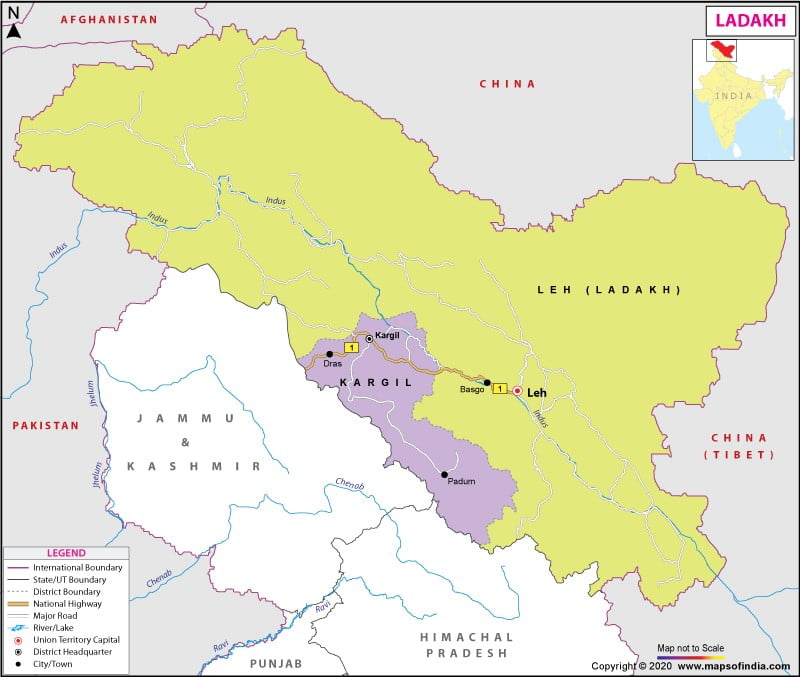Geography
In News: A day ahead of his five-day climate fast came to a close, Ladakhi innovator Sonam Wangchuk claimed that he had been placed under house arrest at his institute and denied entry by the police to Khardung La.
Ladakh

- Ladakh, large area of the northern and eastern Kashmir region, northwestern Indian subcontinent.
- Administratively, Ladakh is divided between Pakistan (northwest), as part of Gilgit-Baltistan, and India (southeast), as part of Ladakh union territory (until October 31, 2019, part of Jammu and Kashmir state); in addition, China administers portions of northeastern Ladakh.
- Ladakh covers about 45,000 square miles (117,000 square km) and contains the Ladakh Range, which is a southeastern extension of the Karakoram Range, and the upper Indus River valley.
- Ladakh is one of the highest regions of the world.
- Its natural features consist mainly of high plains and deep valleys.
- The high plain predominates in the east, diminishing gradually toward the west.
- In southeastern Ladakh lies Rupshu, an area of large, brackish lakes with a uniform elevation of about 13,500 feet (4,100 metres).
- To the northwest of Rupshu lies the Zaskar Range, an inaccessible region where the people and the cattle remain indoors for much of the year because of the cold.
- Zaskar is drained by the Zaskar River, which, flowing northward, joins the Indus River below Leh.
- In the heart of Ladakh, farther to the north, cultivation by means of manuring and irrigation is practiced by farmers living in valley villages at elevations between about 9,000 and 15,000 feet (2,750 and 4,550 metres).
- Leh, the most accessible town of Ladakh, is an important trade centre located 160 miles (260 km) east of Srinagar.
Climate and Vegetation
- The climate of Ladakh is cold and dry.
- Average annual precipitation is roughly 3 inches (80 mm); fine, dry, flaked snow is frequent and sometimes falls heavily.
- Vegetation is confined to valleys and sheltered spots, where a stunted growth of tamarisk (genus Tamarix) shrubs, furze (also called gorse; spiny plants of the legume family), and other plants supply much-needed firewood.
- The principal products are wheat, barley, millet, buckwheat, peas, beans, and turnips. Woolen cloth and other textiles are the primary manufactures.
Festivals
- Hemis Festival
- Thiksey, Karsha and Spituk Gustor
- Dosmochey Festival
- Matho Nagrang Festival
- Stok Guru Tsechu Festival
- Phyang Tsedup Festival
- Yuru Kabgyat Festival
- Losar (New Year) Celebration
Ladakh Autonomous Hill Development Council, Leh
- LAHDC, Leh was constituted in accordance with the Ladakh Autonomous Hill Development Council Act, 1995.
- The Council came into being with the holding of elections on August 28,1995.
- The democratic constitution of the Council has heralded democratic decentralization of planning process with the involvement of people at the grass root level.
Source: Indian express













